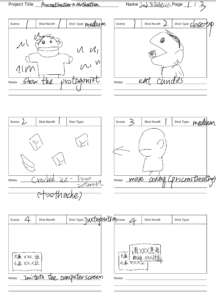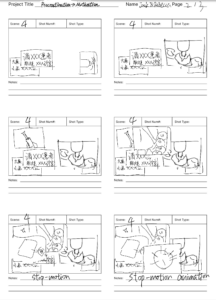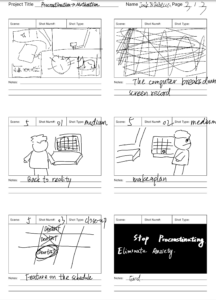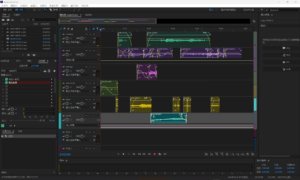Rebecca Xiong and Jack Xu
Updated version of Storyboard:



Welcome to Jack's blog! Jack loves Contemporary Art, Photography, Travel, Hiphop Music and Borussia Dortmund! Feel free to explore this website and talk to Jack!





Concept
For my Memory Soundscape, I decided to focus on my memory of coming home from senior high school every day. I was under a lot of stress at the time due to a high workload of homework and tests. However, on my way back home, I always felt a sense of relief as I walked on the streets, hearing the sound of the hustle and bustle of city life. What’s more, my parents were cooking dinner when I was on my way back home and I could enjoy the hot meal once I arrived home. Hence, I hoped to convey this warmth in the midst of busyness to my listeners. To achieve this goal, I chose parellel editing, namely, using the left channel to demonstrate what was happening in the house while using the right channel to talk about what was happening on my way back home. These two channels made different sounds at the same time, which added more communications between them.
Process
As I mentioned, I divided the sounds mainly into two categories: sounds on the way back home and sounds at home. For the former, I recorded environmental sounds at the end of class, sound of sound of students’ chit-chat, footsteps, sound of cars and old bicycles passing by, sound of passers-by talking, sound of a shared bike unlocking, sound of the convenience store opening bell and the sound of subway. These sounds were representative sounds and they were relevant to each other so that they could coherently tell a story. For the latter, I chose the sound of chopping and frying, the sound of the hood, the sound of the gas stove, the sound of the faucet and the sound of opening as well as closing the door. My reason of using these sounds was that they were close to real life and thus made it easier to feel the warmth in the simple daily life. The techniques I used were the recorder and shotgun. Since I didn’t have a hurricane globe, some of the recording sounds were not satisfying due to the sound of wind. To solve this problem, I worked out two feasible solutions: one was to record more sounds in indoor environment and the other was to add effects in Adobe Audition. Later it turned out that it worked!
When it comes to editing, I removed the background noises for some sounds while kept the environment sounds for the others according to my design. Next, I sorted tracks into cooking, road, talking1, afterclass1, metro and other sounds and I added different effects to each tracks. For example, metro track had parametric equalizer and was fully reverberated and road track had slight delay and fully reverb with different settings. Then I changed the panning setting based on the sounds’ category: the left channel was about sounds in the house while the right channel was about sounds on the way back home. After that, I adjusted the fade in and fade out to make the separated sounds as a whole. I also edited certain points when two sounds played at the same time and had other sounds after one sound stopped so as to make the sounds more cohesive. My main challenge was how to keep a balance between left and right channels. My solution was that the right channel had louder sounds at first and the left channel had louder sounds once the frying sounds joined in. In the last part, the two channels combined into one channel. What I had learned was how to deal with original sounds, especially how to firstly make it purer, how to add effects on it and how to make it more cohesive with other sounds.
Conclusion
If I had more time, I would adjust the volume to make some sounds more suitable rather than have sounds that seemed like to be in different layers. I would also tried other effects that I had never used before to figure out whether it was helpful to the project. At the presentation day, I was glad that most classmates got my main idea or topic. Still, I received some illuminating feedbacks: one said that two channels playing at the same time might be a little bit messy because the listener didn’t know which one to listen to. I had to admit this point because this was the negative side of using the risk-taking parellel editing, but I thought having more effects and changing volume could be one solution. Another feedback was that I could use some effects on the frying sound to make it less harsh. I found this feedback feasible and helpful. Professor Chen also suggested that I could try put this idea into video editing and I thought I would probably give it a try in later video assignments.
Image of Audition
